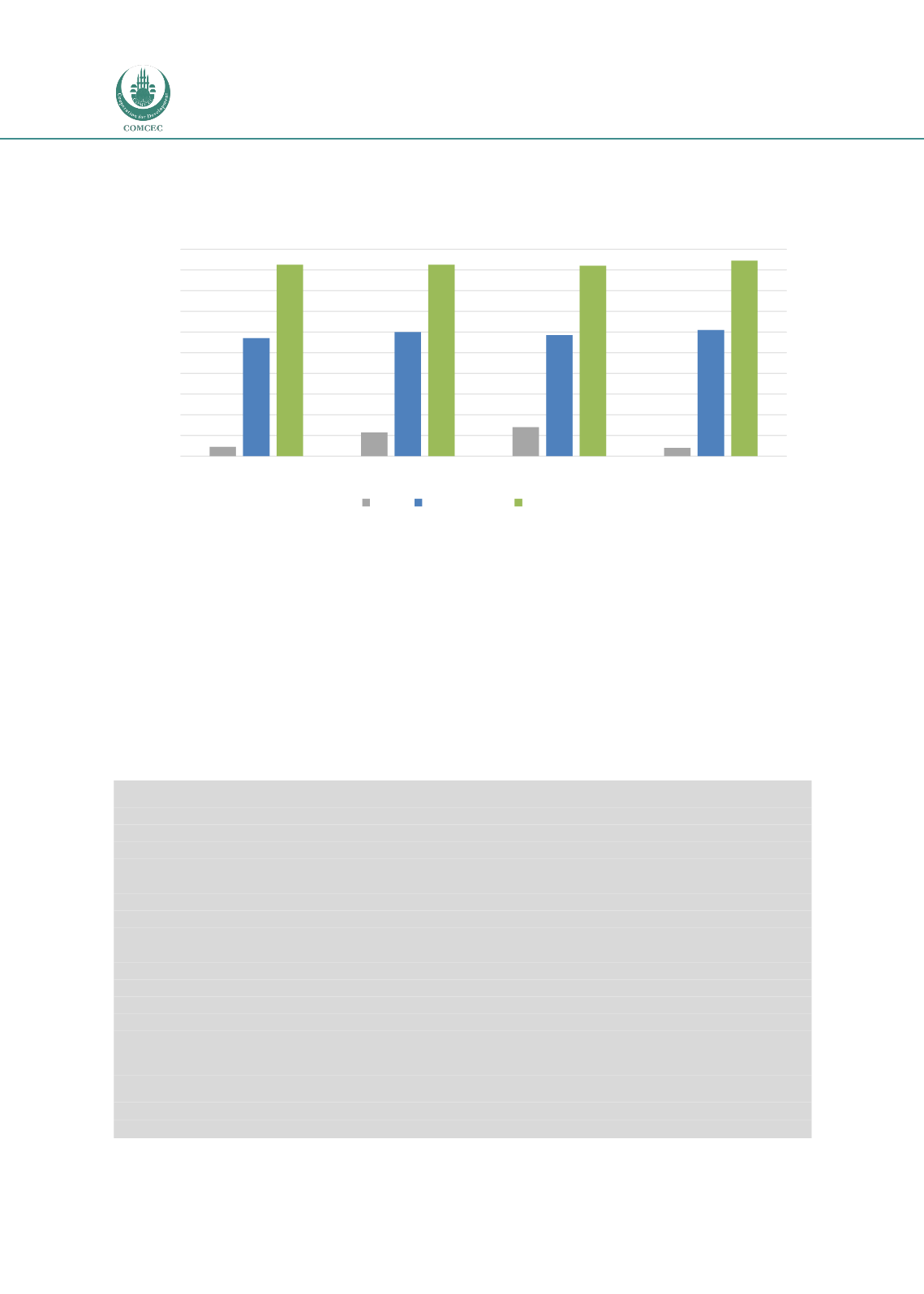

Promoting Agricultural Value Chains:
In the OIC Member Countries
62
When looking at some of the indicators required for investment in agricultural value chains,
the picture is similar (se
e Figure 4-4).
Figure 4-4 Indicators for ease of agricultural investments, 2015
Source: World Bank Doing Business Study, 2015
Explanation: Number of ranked countries: 189. The higher the score of a country, the worse the business climate.
This means that procedures, time and costs to start a company are high; credit facilities are
difficult to access; and contract enforcement when dealing with suppliers or customers is
difficult. Addressing these issues has been identified as important for facilitating investments
in agro-processing facilities in OIC countries (COMCEC, 2013). Trading across borders is
particularly relevant for export purposes and the import of raw materials, machinery and
equipment. While OIC countries on average are ranked at a relatively low 122
nd
place, this is
one of the areas of the business environment where OIC countries have improved most over
the past year. For instance, Benin, Cote d’Ivoire, Morocco and Uzbekistan reduced the number
of documents required for customs; and Algeria, Jordan, Kazakhstan strengthened transport or
port infrastructure (World Bank, 2015).
Box 3. Uzbekistan’s investment in cotton value adding
Over the past five years, Uzbekistan’s cotton spinning and weaving industries have been investing heavily in
new equipment and upgrading of existing equipment to satisfy growing domestic and export demand for
cotton yarn. Many local textile mills are aiming to broaden their production assortment in order to expand to
high value added products. Currently, there are more than 50 joint ventures established in the textile industry
with partners from Turkey, Germany, South Korea, Japan and Switzerland. In 2013, total foreign investments
in the textile industry exceeded US$ 2 billion. The main products produced and exported by textile mills
remain cotton yarn (320,000 tons), grey fabrics (225 million sq. meters), knitted fabrics (55,000 tons), knitted
garments (179 million units) and hosiery (45 million pairs). Despite existing economic problems, the local
spinning industry is optimistic about textile production and export growth. In 2013, 252 enterprises of light
industry exported textile products worth of US$ 827 million, which is for 17 percent higher than in 2012.
Compared with 2012 levels, in 2013 export volumes of knitted linen have increased 2.2-fold, cotton yarn by
28.7 percent, fabrics by 27.7 percent and knitted garments by 23 percent. Currently, Uzbekistan exports its
textile products to 48 countries, including new exports markets such as Tunisia, Nigeria, Kenya, Sri Lanka or
Estonia.
The government also implemented a number of tax incentives to stimulate investment in value adding
activities in the cotton sector:
Producers of hosiery & ready garment are exempted from all taxes (except VAT);
Textile exporters (more than 80% to be exported) are exempted from property tax (3.5%).
Kyrgyz
Republic
Malaysia
Uzbekistan
UAE
Chad
Yemen
Suriname
Uzbekistan
0
20
40
60
80
100
120
140
160
180
200
Starting a business
Getting credit
Enforcing contracts Trading across borders
Country ranking
Best
OIC average Worst

















